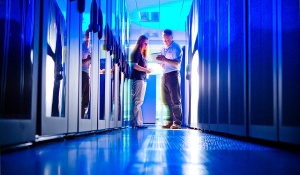Due to caution regarding COVID-19 and the safety of our students, staff, faculty, speakers, and attendees, CDSE Days 2020 is cancelled. Please continue to visit the UB COVID-19 Information website for updates and important information related to this evolving situation.
6th Annual CDSE Days
March 30 - April 3, 2020 | University at Buffalo | Buffalo, NY
Overview of CDSE Days 2020
CDSE Days is an annual event that connects students and faculty from UB and regional colleges and universities, and professionals from local industry, with some of the nation's most prominent scholars of computational and data-enabled science. CDSE Days is a week-long event in Buffalo filled with workshops, lectures, and networking.
The CDSE Days 2020 agenda includes research talks on timely subjects such as the opioid epidemic, polling data analysis, and high-performance computing in the chemical sciences. Instructional workshops will also be conducted on python, agent-based computational models (ABM), blockchain, SQL, machine learning, and using UB’s Center for Computational Research (CCR). The week will end with TED-style talks from industry partners and sessions on career opportunities for computational scientists.
Event Start Date: March 30, 2020 This content is archived.



